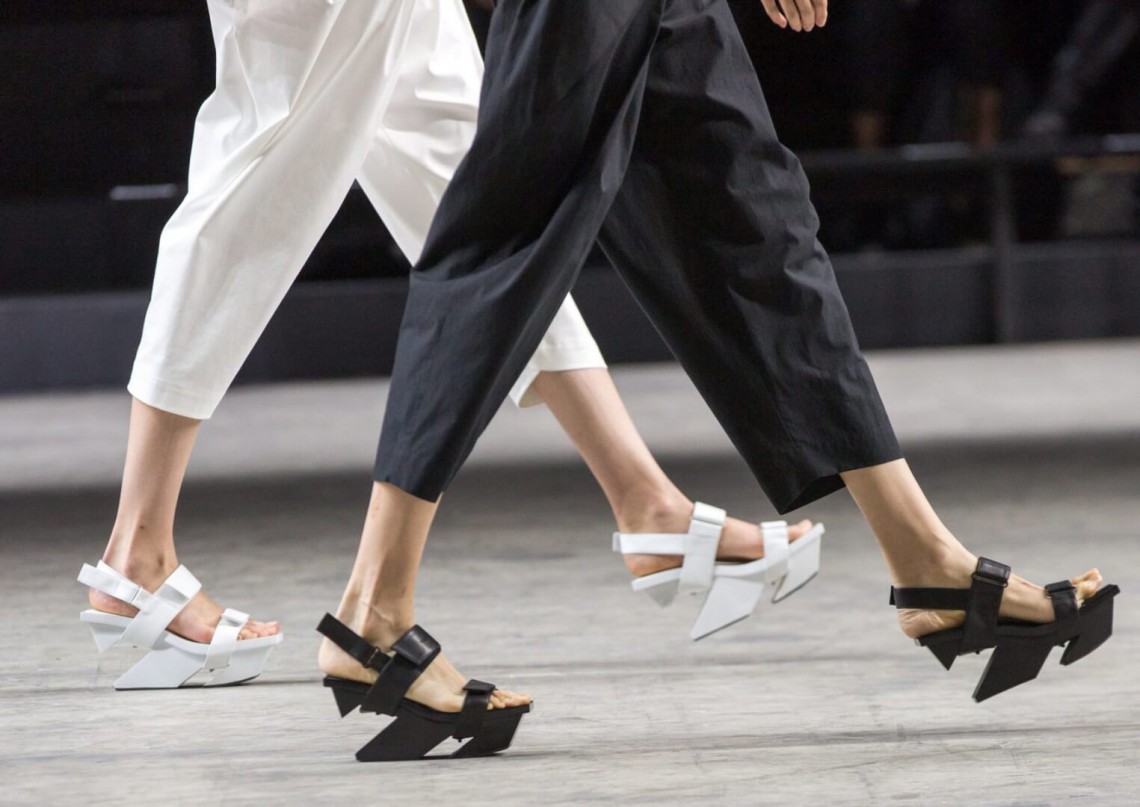
The Japanese fashion designer Issey Miyake, renowned for his innovative pleated clothing and for producing 100 mock turtlenecks for the Apple co-founder Steve Jobs, has died of liver cancer in a hospital in Tokyo. He was 84.
The Issey Miyake Group released a short statement about his work saying: “Miyake’s dynamic spirit was driven by a relentless curiosity and desire to convey joy through the medium of design.” It stated that “as per Mr Miyake’s wishes, there will be no funeral or memorial service”.
Much like Andy Warhol, Miyake was interested in the overlap between art and design, and fashion. Throughout his 52-year career, the designer maintained an “anti-trend” stance, always referring to his designs as “clothing” rather than “fashion”.
“I am most interested in people and the human form,” Miyake told the New York Times in 2014. “Clothing is the closest thing to all humans.”
Perhaps best known for designing the polyester-cotton mock turtlenecks indelibly linked with Steve Jobs, it is believed he produced 100 at less than $200 each. Designed to alleviate “decision fatigue”, along with Jobs’ Levi’s 501s and New Balance 991s, the tops became shorthand for late 90s Silicon Valley uniform, based on the idea that busy people’s minds are on more important things than picking out ties.
Born in Hiroshima in 1938, Miyake studied graphic design at the Tama Art University in Tokyo. But piqued by the crossover between disciplines, he pivoted to fashion and moved to Paris to become an apprentice to Guy Laroche and eventually work for Hubert de Givenchy around the time Audrey Hepburn was wearing his dresses.
After witnessing the 1968 student protests, Miyake became disenchanted by an industry designed to dress only the wealthy. It was this interest in fashion as art and function, democratic but aesthetically pleasing, which led him to establish the Miyake Design Studio in 1970, and show his first very wearable collection in New York in 1971. One of his earliest pieces was a jersey body, hand-painted using traditional Japanese tattoo techniques.
A keen sportsman, function became the linchpin of Miyake’s work. His most famous and most affordable clothes, the Pleats Please line, was launched in 1993 as a retort to the price and unwearability of high-end fashion.
Featuring capes and trousers, and flowing sleeveless tabards made from heat-treated polyester to create permanent pleats, the clothes never creased, could be machine washed and be rolled instead of folded. The line remains one of the first and best examples of gender-free clothing and still fetches hundreds of pounds on resale sites.
It was Miyake’s cynicism about the fashion industry, in particular the speed at which it produced, that gave his designs such longevity in reputation and design. In an interview with the Village Voice in 1983, Miyake outlined his opposition to the fashion cycle: “I want my customer to be able to wear a sweater I designed 10 years ago with this year’s pants.”
Mikyake saw technology as a solution to the problem of overproduction, with one such solution the late 90’s “One Piece of Cloth” idea (later known as A-POC) which pioneered the idea of making clothes out of a single tube of fabric, cutting down and waste and showing exactly what could be done with a knitting machine, a computer and the right knowhow.
Many of his designs are in museums, including the Museum of Modern Art’s permanent collection. In 2010, he received the Order of Culture in 2010 and in 2016 was decorated as a Commandeur de l’Ordre National de la Légion d’honneur.
Loth to give interviews, Miyake had a pronounced limp – a result of surviving the 1945 atomic bomb dropped on his home town of Hiroshima when he was seven. Three years later, his mother died of radiation exposure.
In a rare 2009 op-ed for the New York Times, Miyake recounted just how much that day, and his mother’s subsequent death, informed his creativity. “I have tried, albeit unsuccessfully, to put them behind me, preferring to think of things that can be created, not destroyed, and that bring beauty and joy. I gravitated toward the field of clothing design, partly because it is a creative format that is modern and optimistic.
“I did not want to be labeled ‘the designer who survived the atomic bomb’.”

